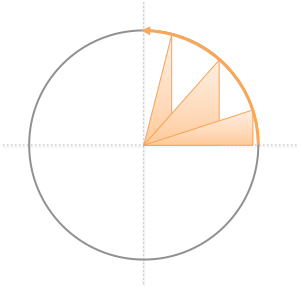Add a new page:
Add a new page:
Imagine Bob The Alien visits Earth to study our species.
Without new words, humans are hard to describe: “There’s a sphere at the top, which gets scratched occasionally” or “Two elongated cylinders appear to provide locomotion”.
After creating specific terms for anatomy, Bob might jot down typical body proportions:
How is this helpful?
Well, when Bob finds a jacket, he can pick it up, stretch out the arms, and estimate the owner’s height. And head size. And eye width. One fact is linked to a variety of conclusions.
Even better, human biology explains human thinking. Tables have legs, organizations have heads, crime bosses have muscle. Our biology offers ready-made analogies that appear in man-made creations.
Now the plot twist: you are Bob the alien, studying creatures in math-land!
Generic words like “triangle” aren’t overly useful. But labeling sine, cosine, and hypotenuse helps us notice deeper connections. And scholars might study haversine, exsecant and gamsin, like biologists who find a link between your tibia and clavicle.
And because triangles show up in circles…

…and circles appear in cycles, our triangle terminology helps describe repeating patterns!
Trig is the anatomy book for “math-made” objects. If we can find a metaphorical triangle, we’ll get an armada of conclusions for free. How To Learn Trigonometry Intuitively by Kalid Azad